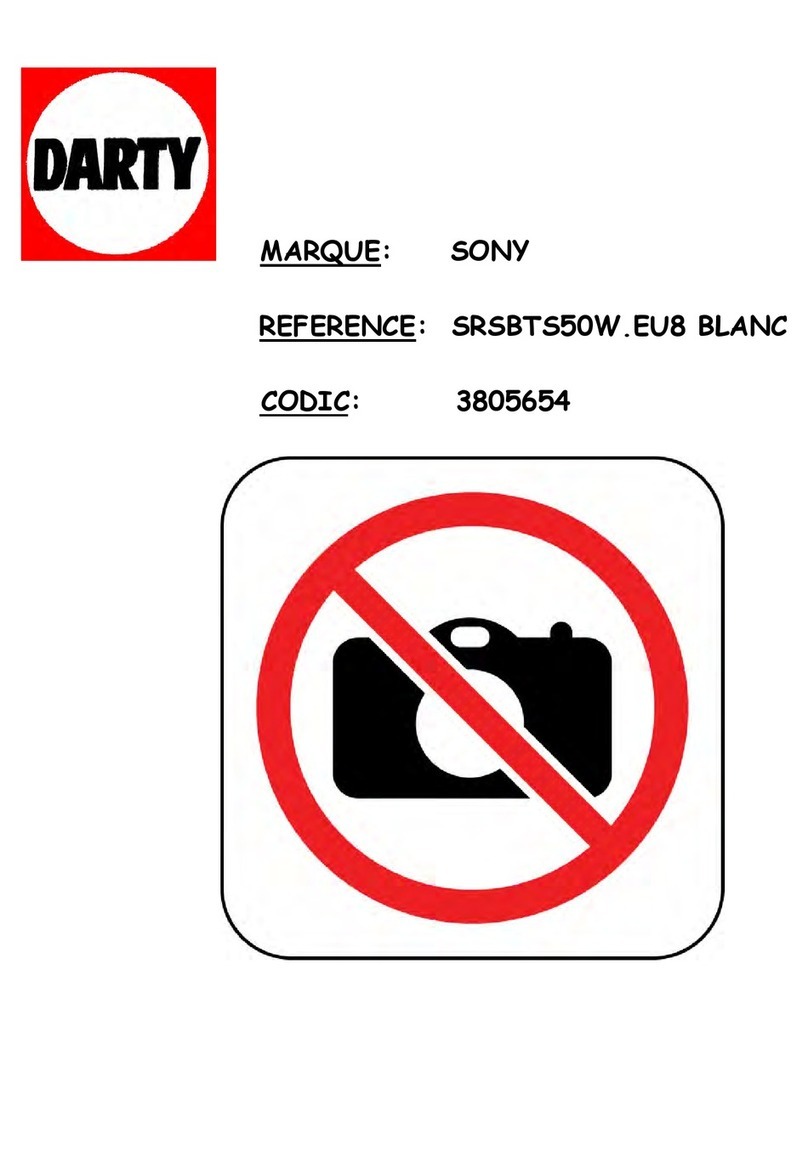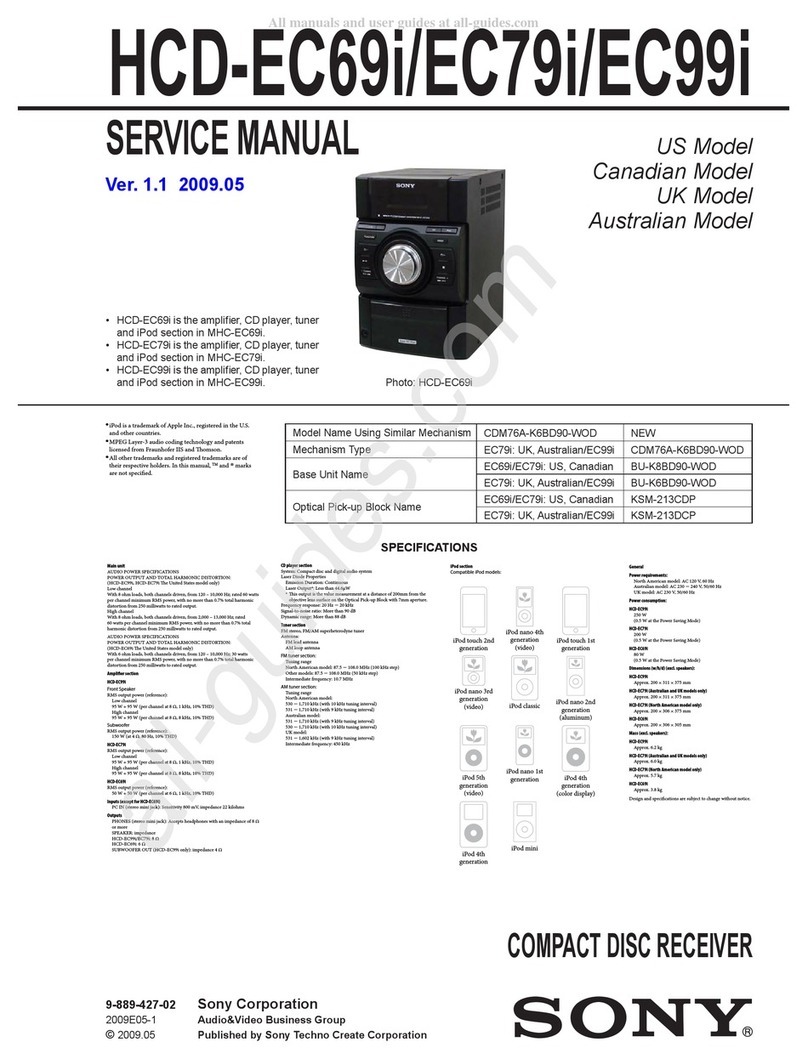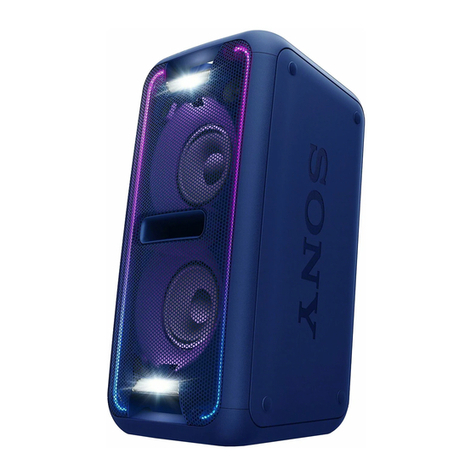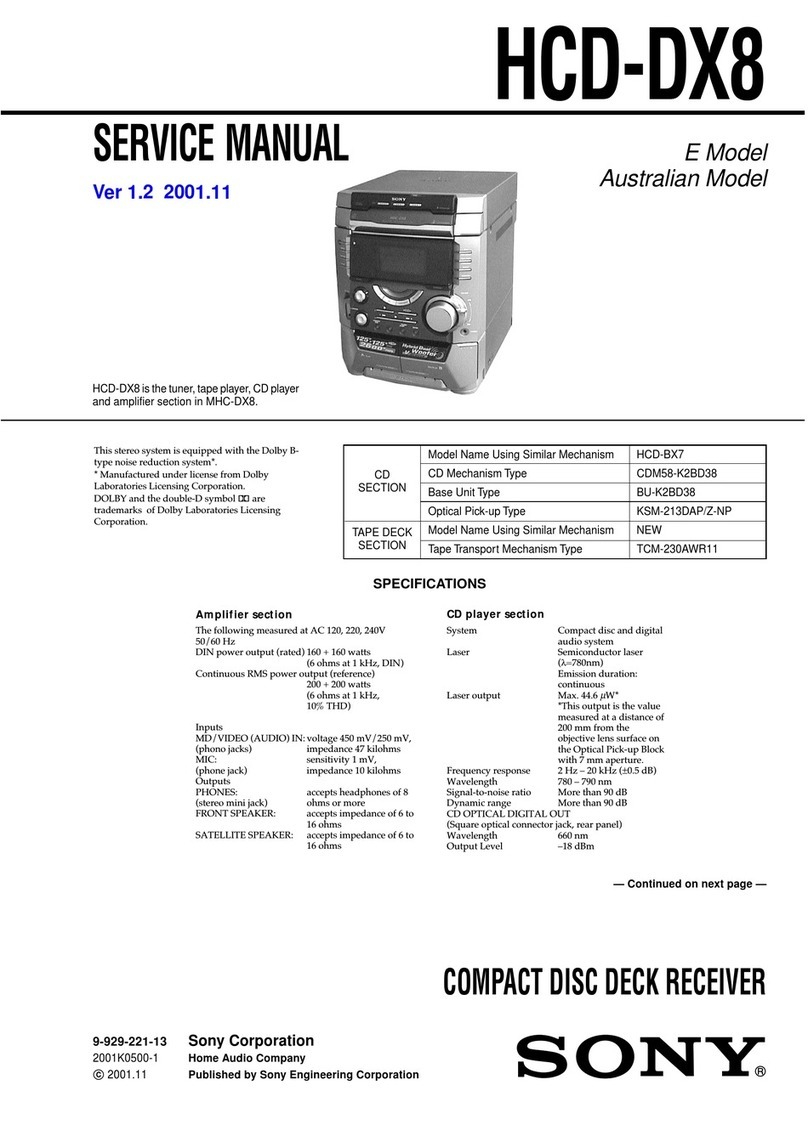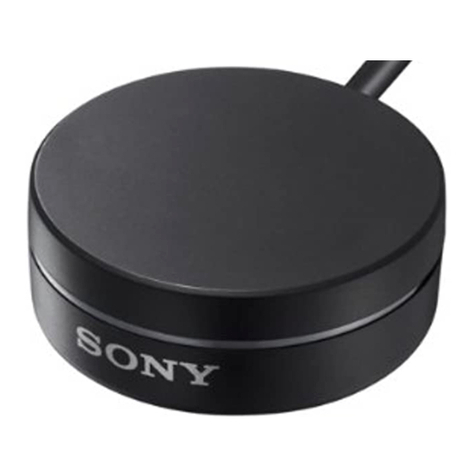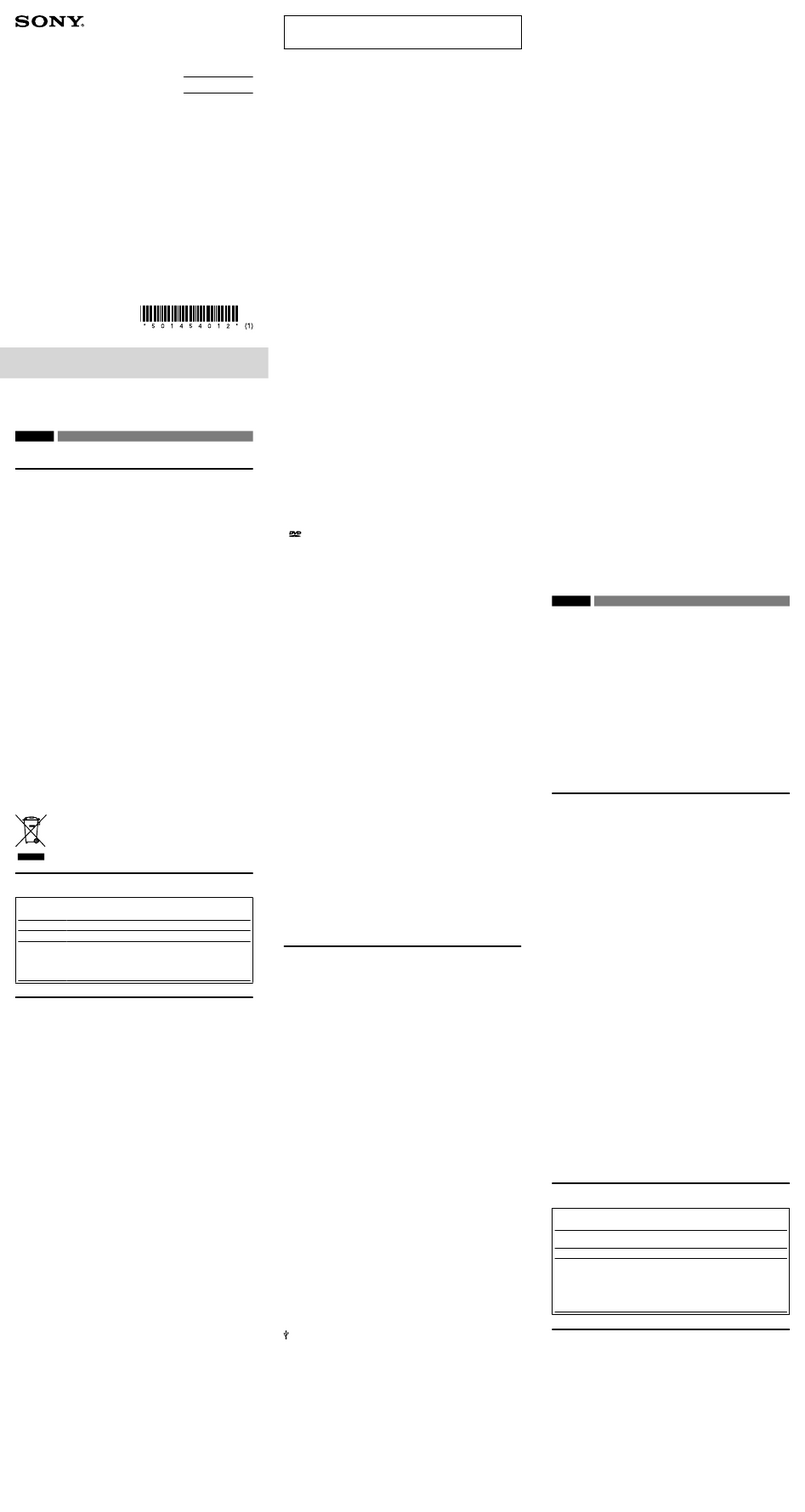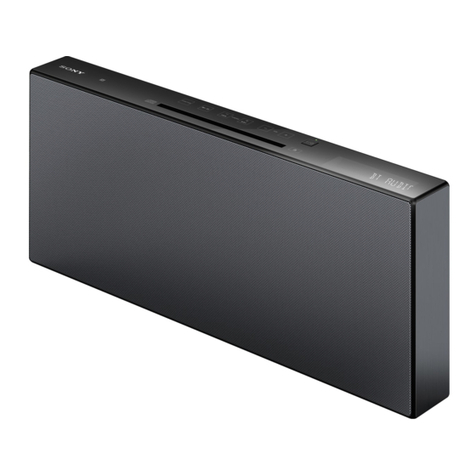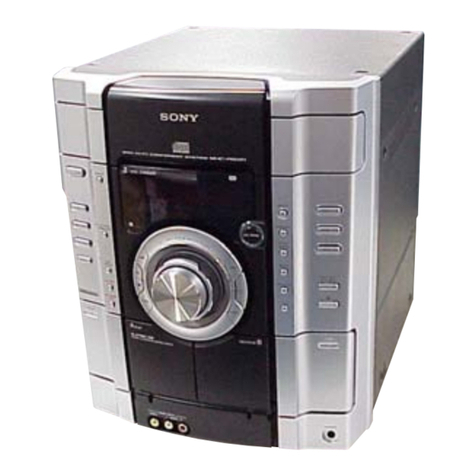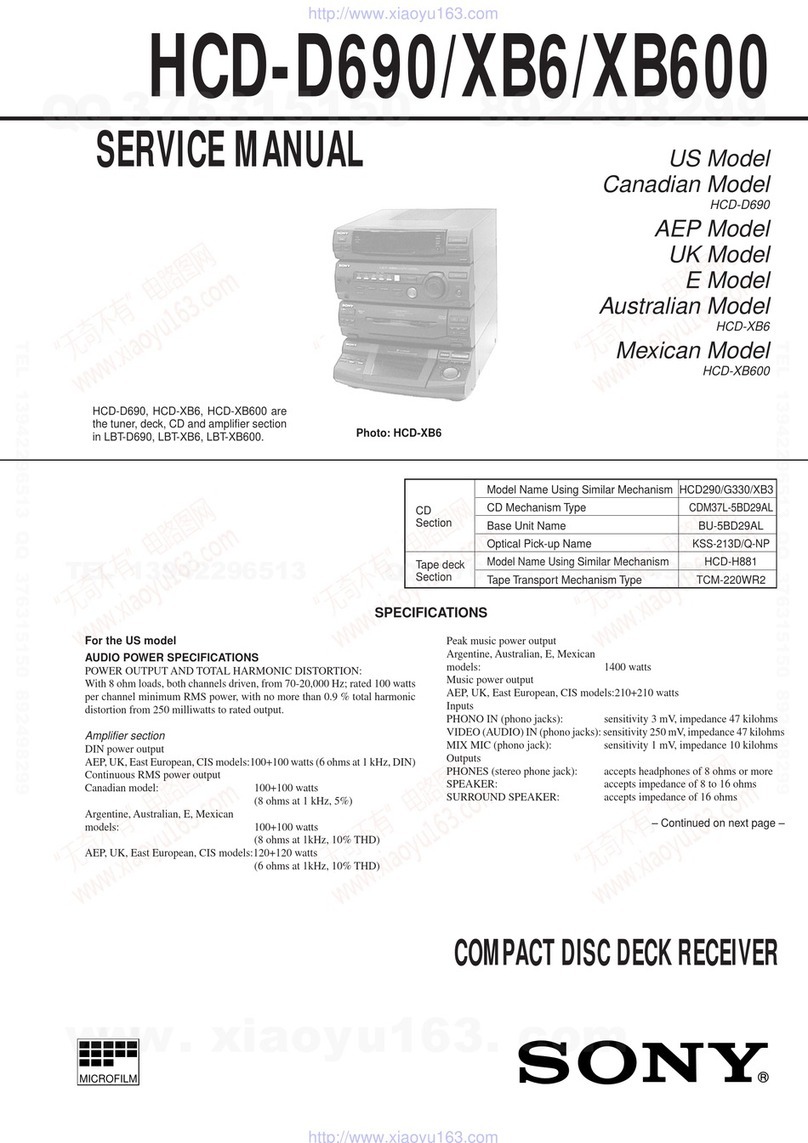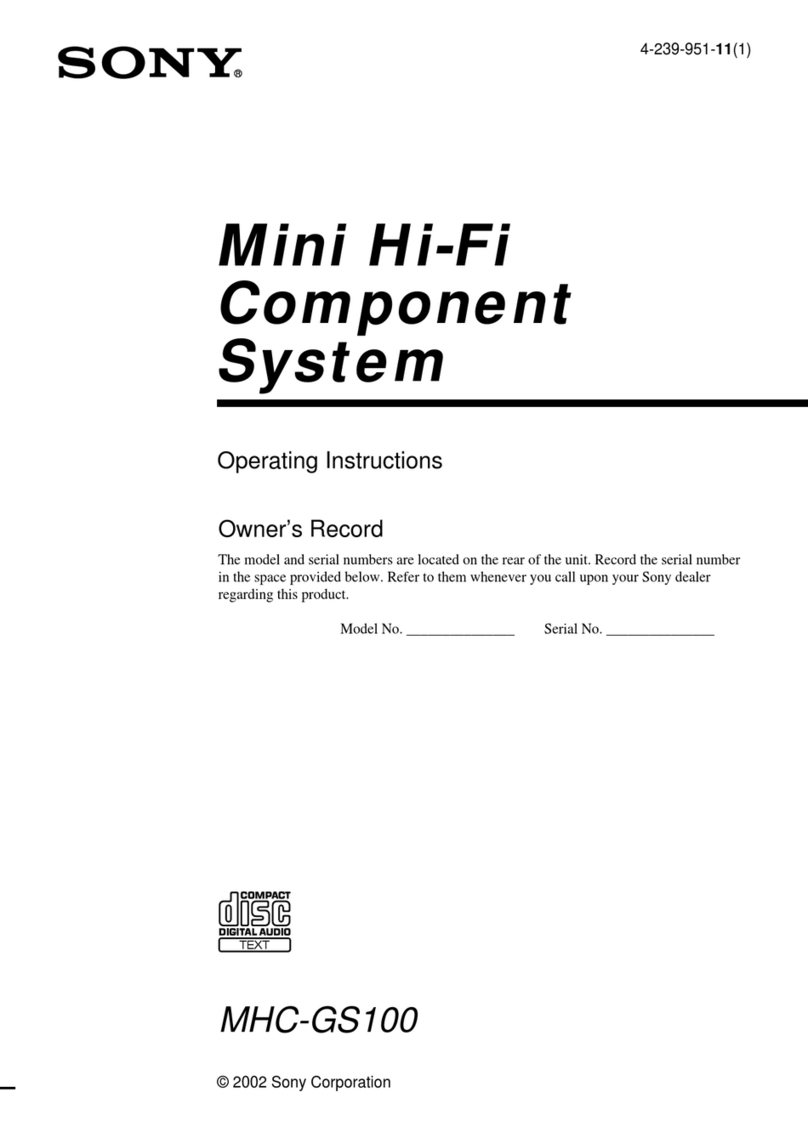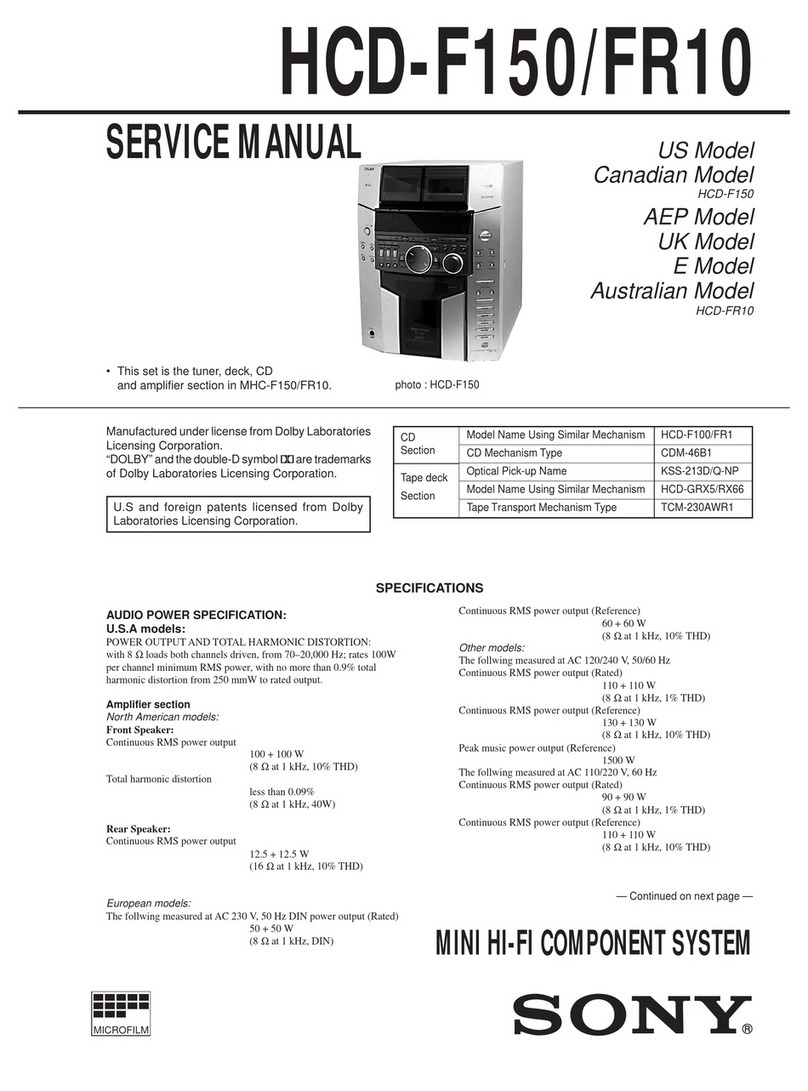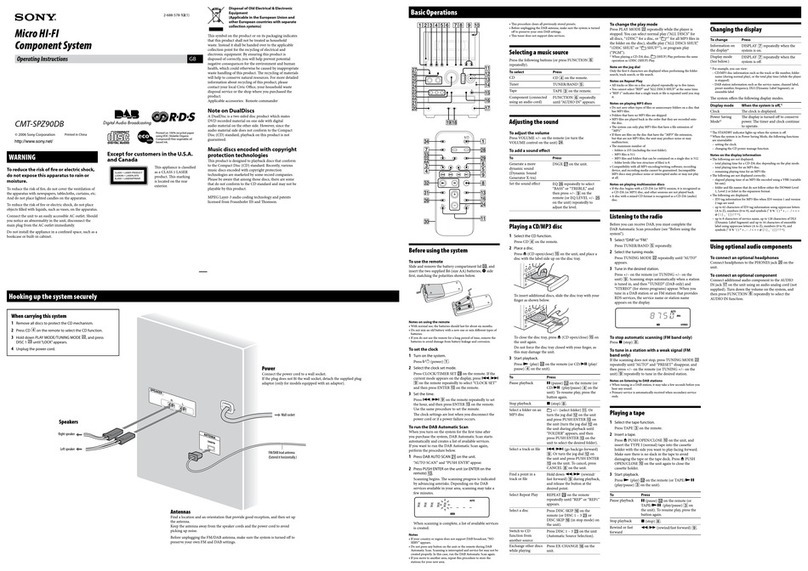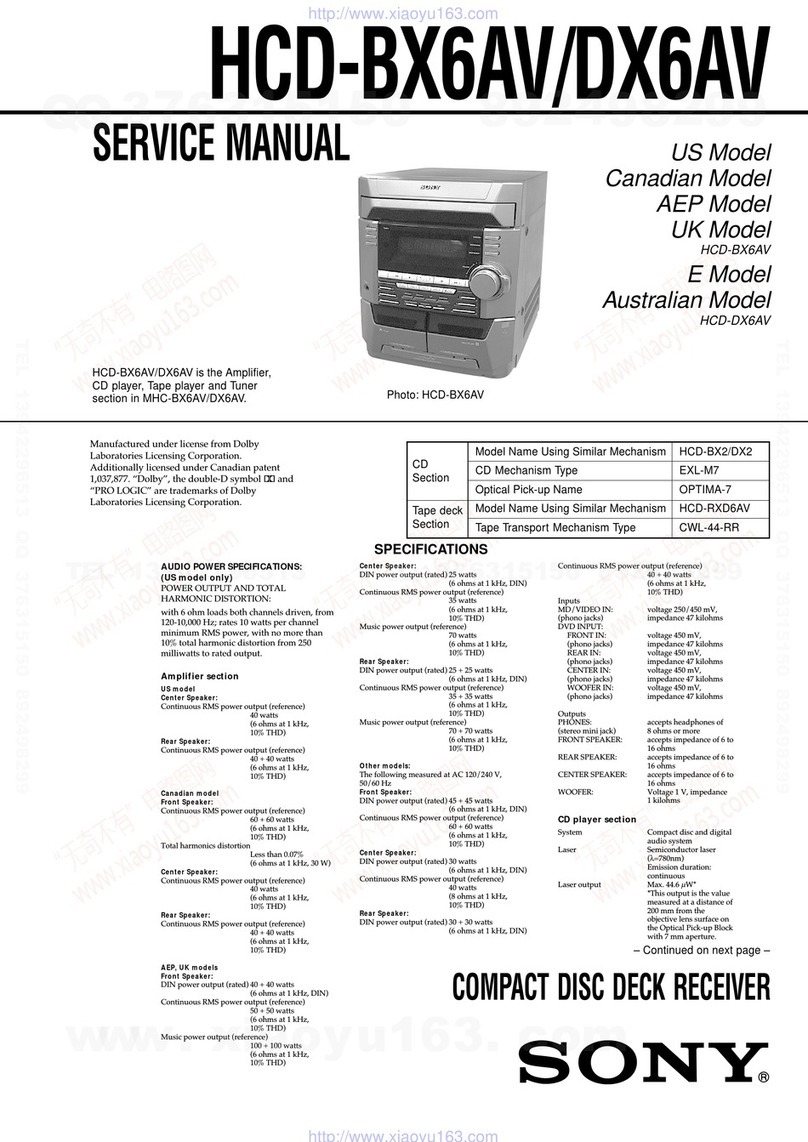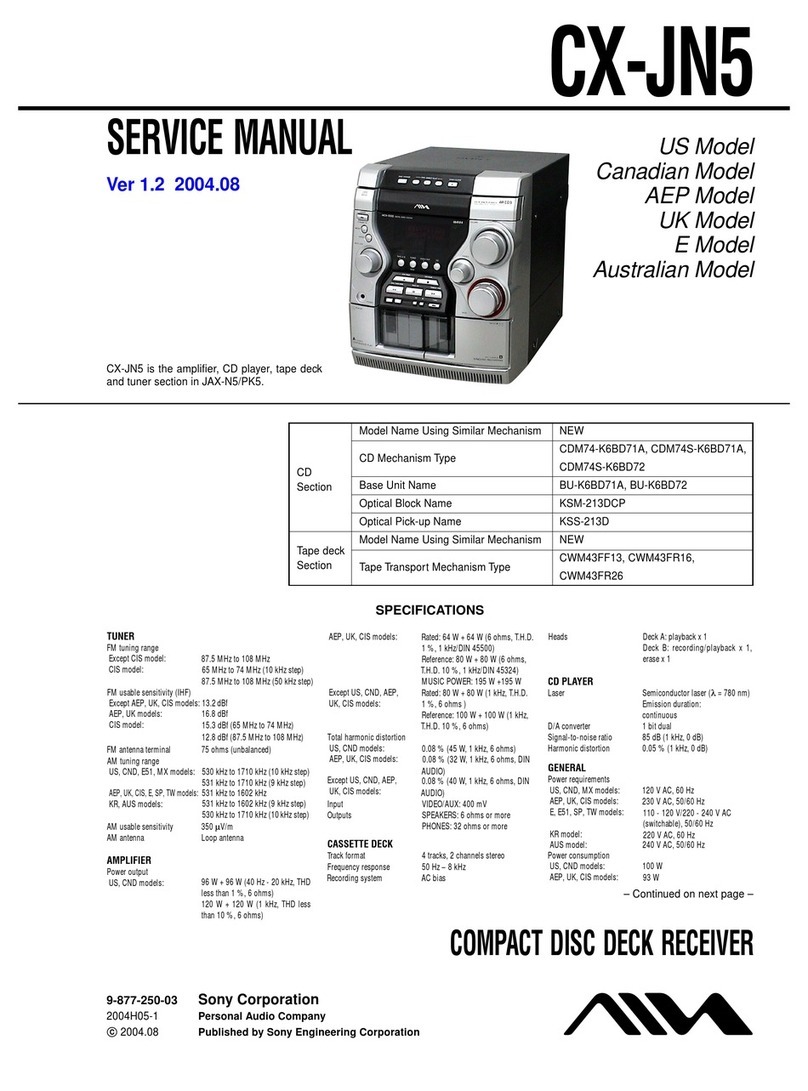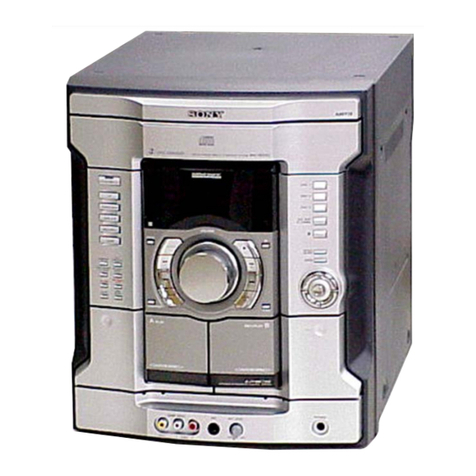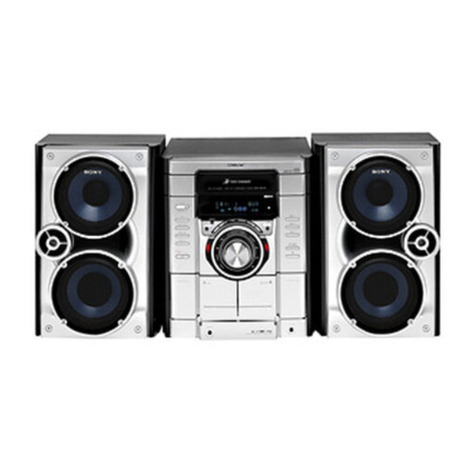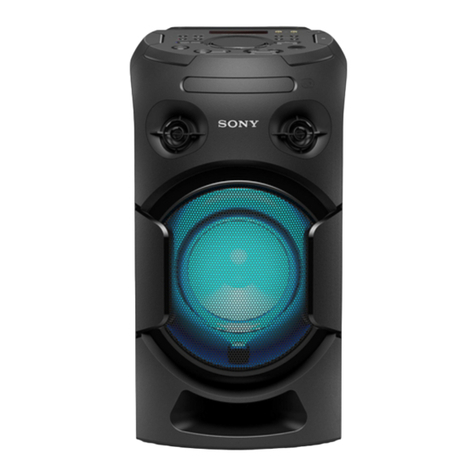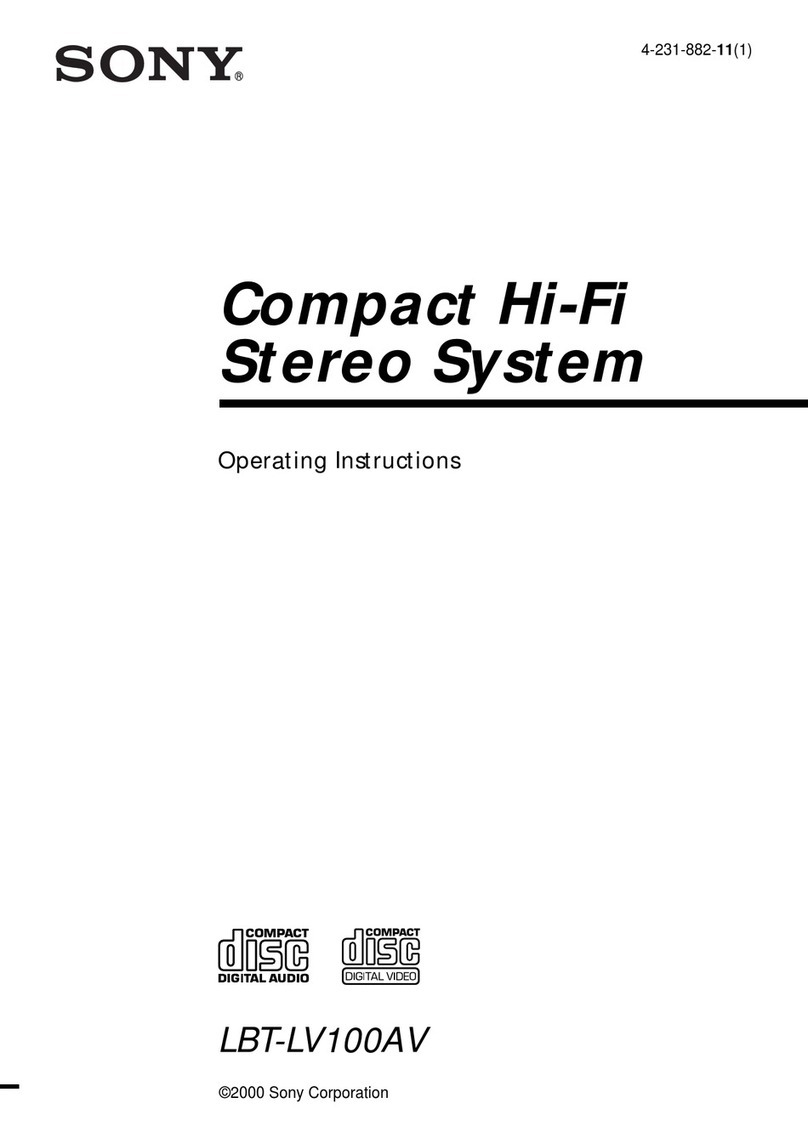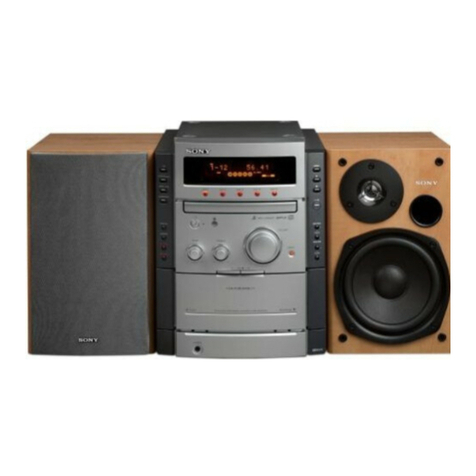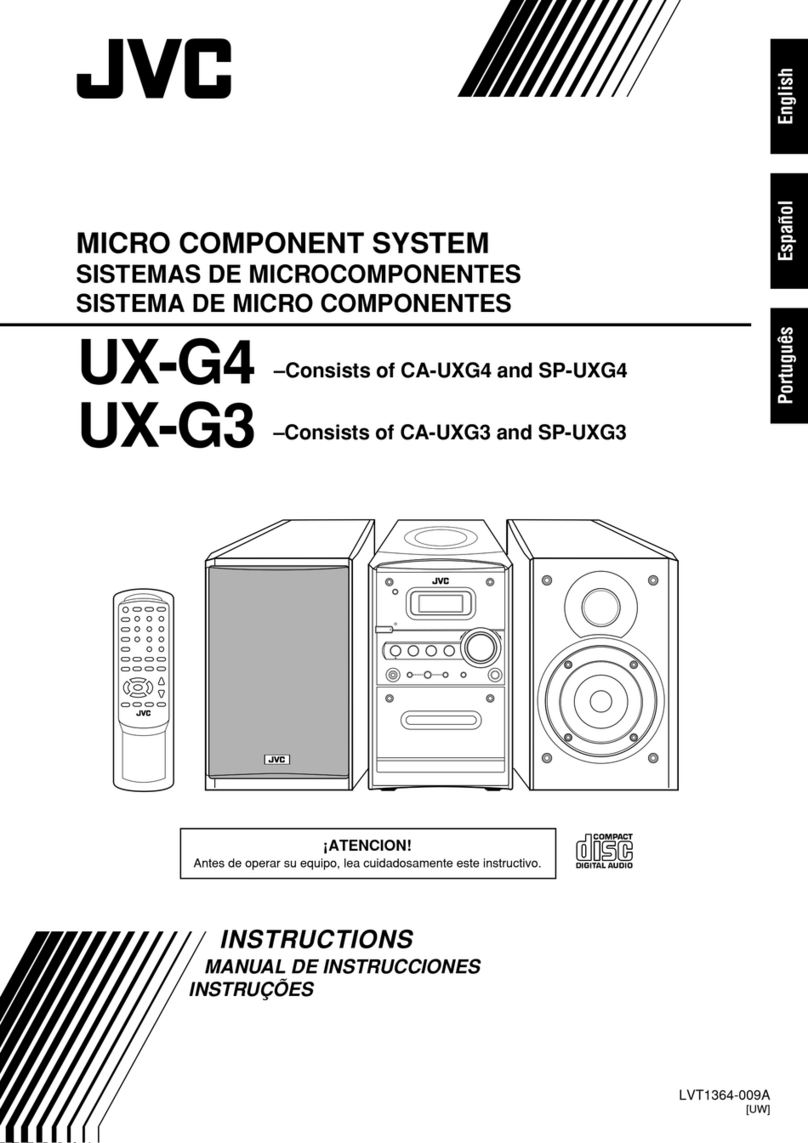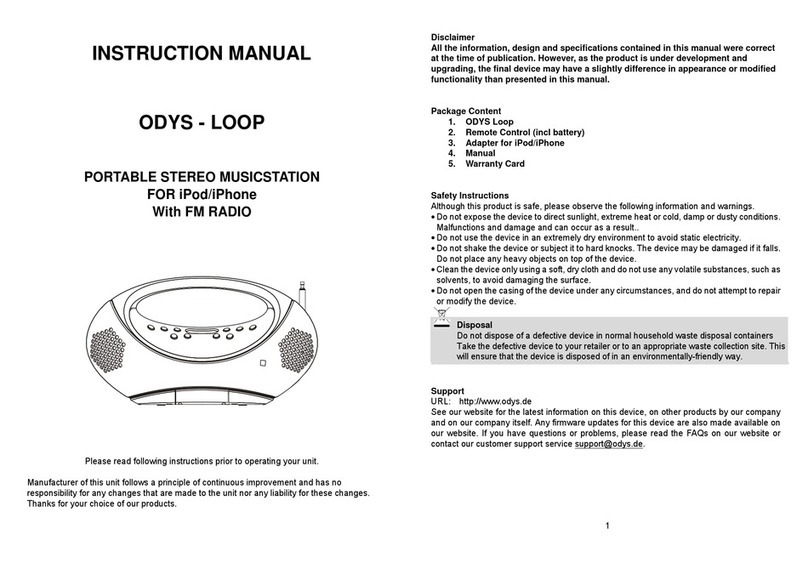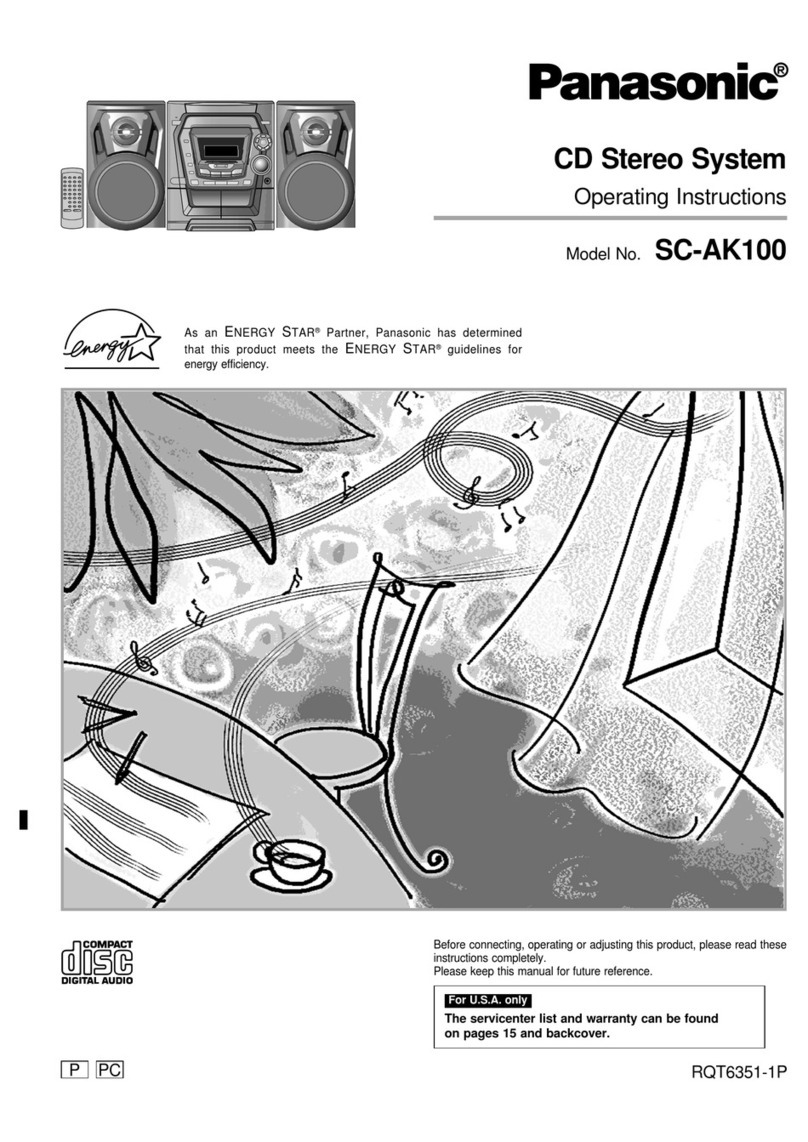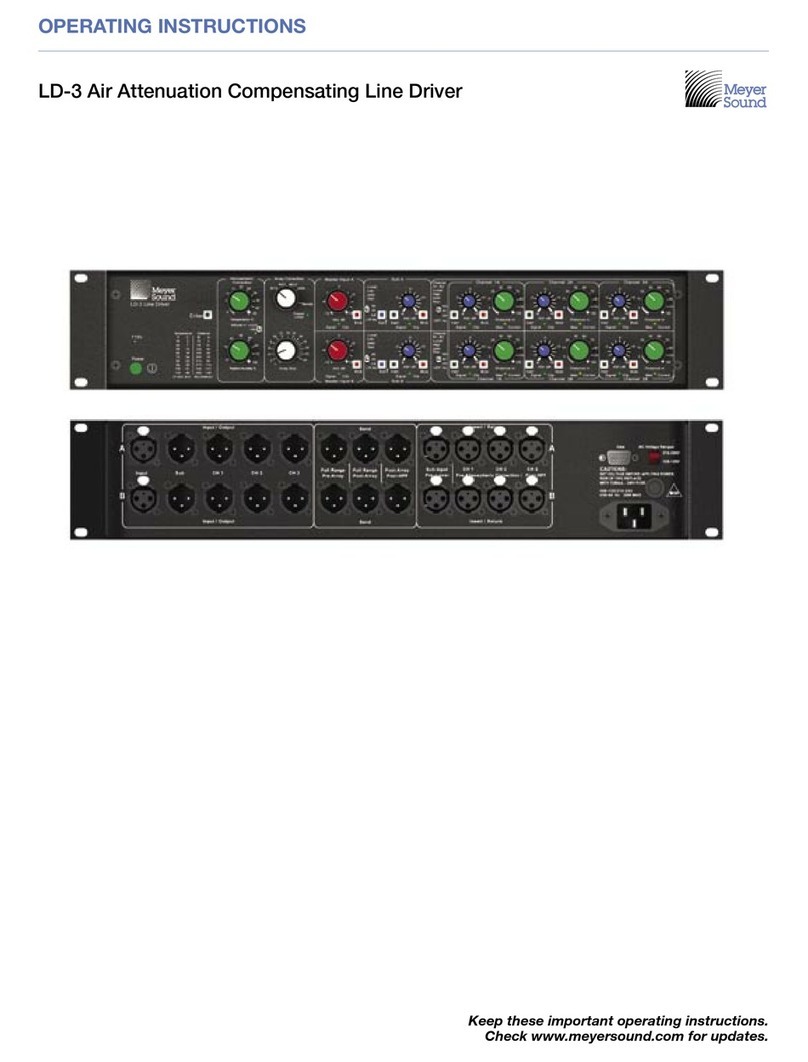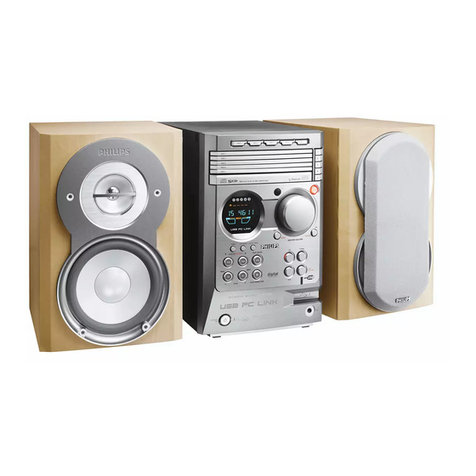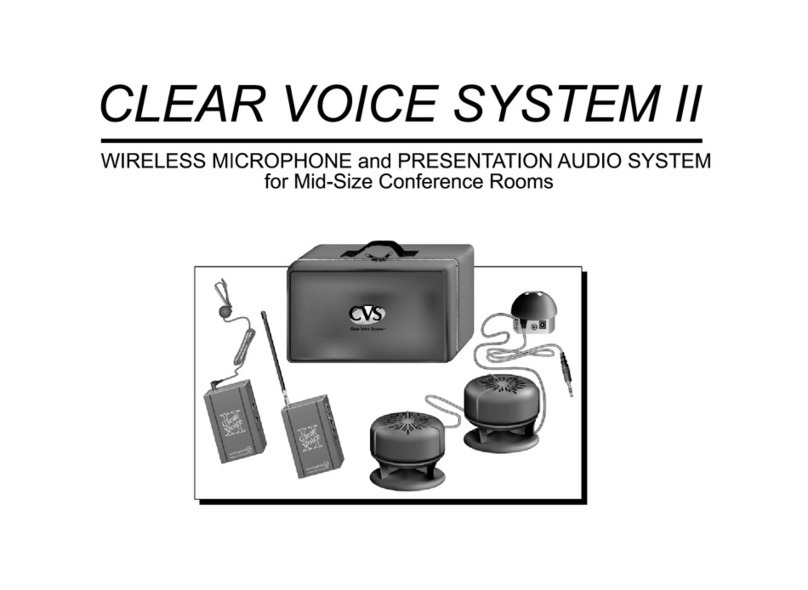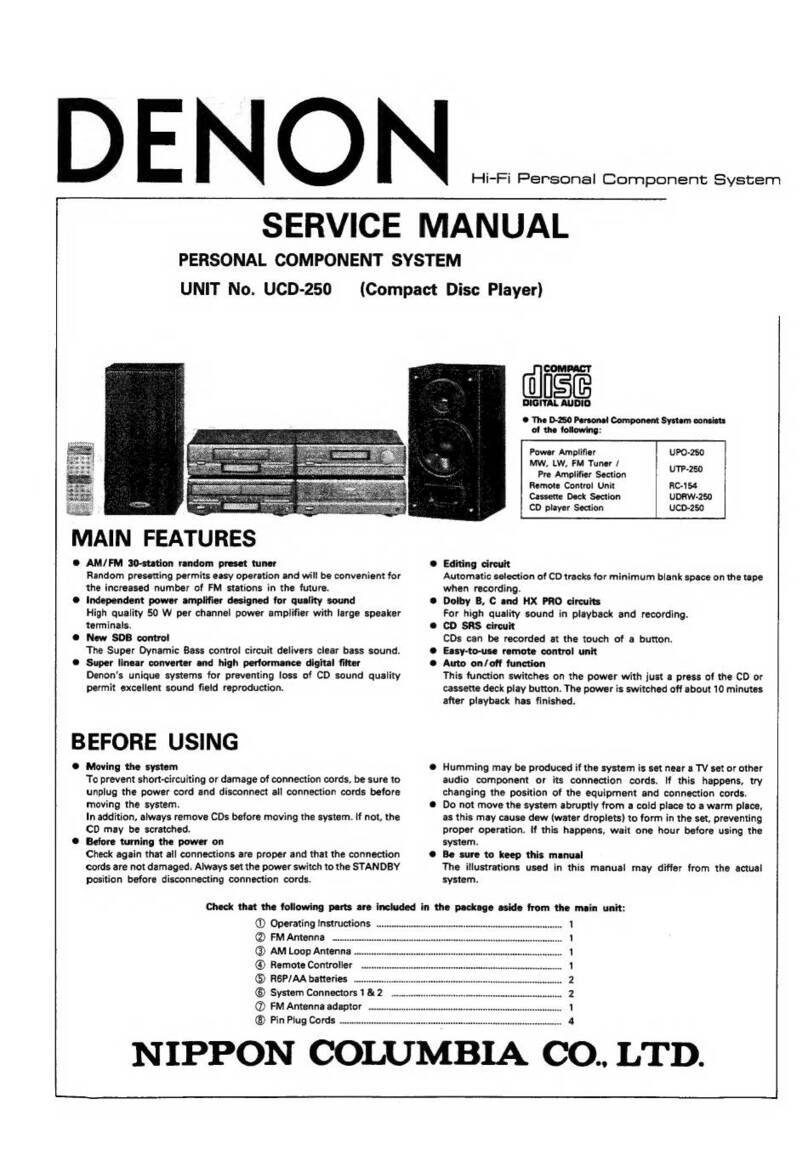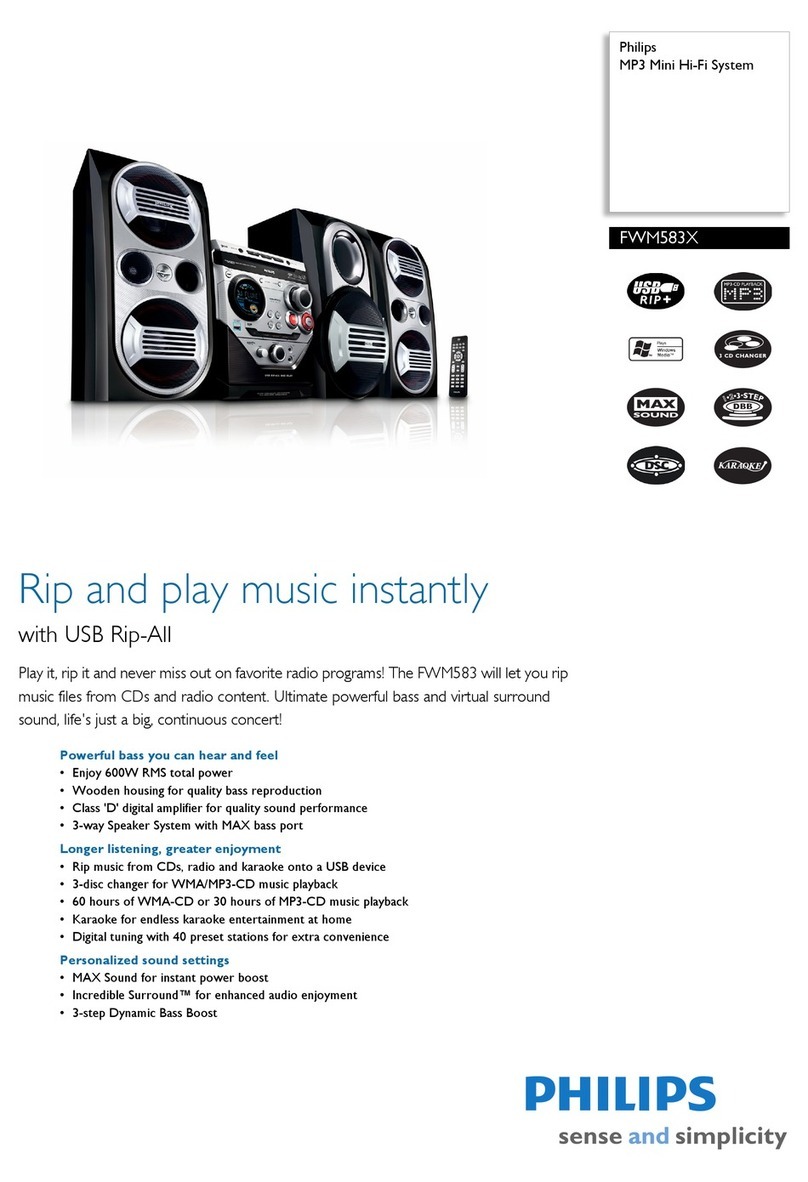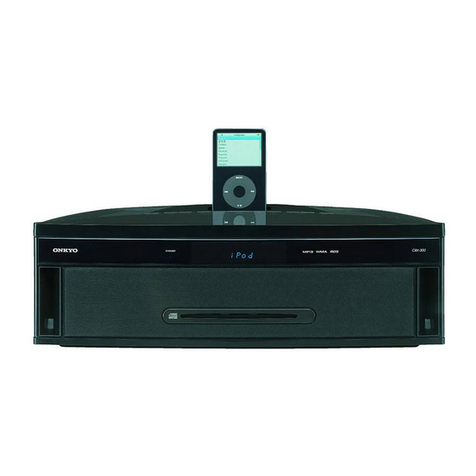
'•
,
....
'
,.
'
PRECAUTIONS
,. . . · .
i:
. .
'..
.
~
'
~
.
On
safety
•
Operate
the unit onlyon
120
VAC,
60
Hz.
•
Unplug
the stereosystem from thewall outlet
ifit
is not
to
be
used
for
an
extended period
of
time.
To
disconnect the
cord, pull it out bygrasping the plug.
Never
pull the plug out
by
the
cord.
•
Shou
ld
any
solid objector liquid fall intothe component,
unpl
ug
the stereosystem and
have
the component
checked
by
qualified personnel beforeoperating
it
any
further.
On installation
•
Do
not place anything
on
top
of
the unit.
The
ventilation
holes must
be
unobstructed forthe properoperationof the
unit
and
to
prolong the life
of
itscomponents.
•
Avo
id installing or
leav
ing the unitin a location:
-nearheatsources such as radiators, airducts orheaters
-subject to directsunlight
-
exposed
to
rain
or
moisture
-
where
it is liable
to
come into contactwithdustordirt
-that is unventilated, suchas abookcase
When
transporting
the unit
Totransport the unit, attach the supplied carrying handle.
Ifyou
have
any
question orproblem concerning yourunit
that is not
covered
in
this manual, please consult your
nearestSony
dea
l
er.
For
repairs,
take inall thecomponentstogether,
even
if
only
one
needs
repairing.
Fordetailed safetyprecautions, seethe leaflet "IM
PORT
ANT
SAFEGUARDS"
.
4
.
TO
CHANGE
THE
AM
.'
J.UNING
INTERVAL
. .
The
AM
tuning interval is preset
at
thefactory
to
10
kHz.To
·change the interval to match the frequency allocation
system
of
your
area
,
proceed
asfollows.
1
Depress
POWER.
2 Tune in
any
AM
station.
3
Press
POWER
toturn the poweroffand waitfor a few
seconds.
4 While pressing
the"+"
TUNING
,press
POWER
to
turn the
power
on.
The
AM
tuning Interval
has
been
set
to
9
kHz.
To
reset
the
interval
to 1OkHz, followtheabove steps.
When
the interval ischanged, all the memorized stations will
be
erased.
